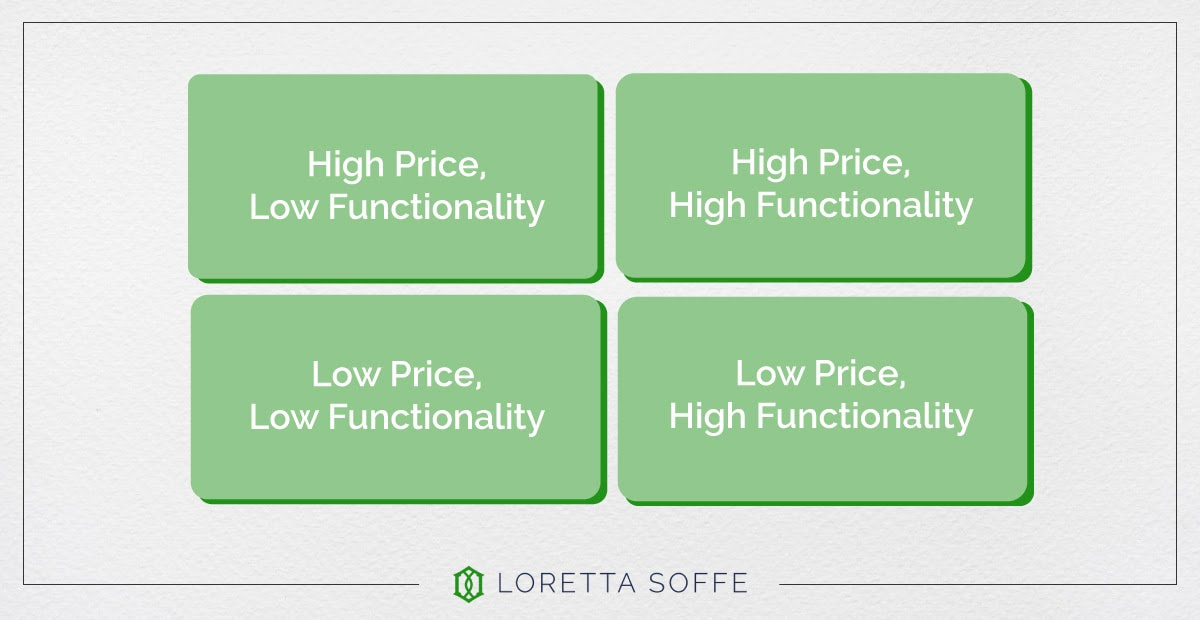|
What does your brand stand for? Who is your target customer? What are your key differentiators? WHY does your brand exist? The success of any brand depends upon following a very deliberate process requiring a laser-like clarity on your brand’s mission and vision and target customer. Step 1: Clarify Your Mission & Vision for the Brand In any endeavor, clarity is key. Being crystal clear on your brand’s mission and vision is the first step to differentiating yourself and outshining the competition. What’s the difference between a brand mission and a brand vision? Brand Mission: A mission for your brand answers the following questions: What do you do? How do you do it? Who do you do it for? To make it plain and simple: your mission is what you do today. One thing I often ask my clients is, “if you were to gather people in a room, what would they say about your brand? What is it you do best, from their perspective?” This feedback can help you determine your Brand Mission. Having a clear mission statement - and aligning with it - is critical for success. Brand Vision: A brand vision answers the question of ‘Where do you want to go and how will you get there?’ This helps you figure out “What Will You Be Famous For?” Which is your North Star. To figure this out, consider what success will look like for you specifically. What would your success be based on? What did you set out to do that made you stand out, shine, and succeed? When your organization understands and supports WHAT you are focused on today (your mission) and WHERE you are “going” (your vision for the future), you create alignment, a clear set of priorities, and a much greater chance of success. Now, WHO are you doing it for? Step 2: Identify & Clearly Understand Your Target Customer Whether you have a new product launch, or a much-needed brand refresh, the only way to make the right decisions regarding product design, category expansion, price, fit, etc. is to align your choices with your target customer. In order to do that, you must first identify and intimately understand who it is you are trying to capture, engage, and sell to. While you can sell to and serve all people, the trajectory of your decision making needs to be angled toward your target customer. Remember, if you try and be all things to everyone, you will be nothing to no one. When you are learning about your customer, it is critical to balance qualitative and quantitative findings to thoroughly understand him/her. Both tell us about customer behavior, but each gives a different perspective and level of detail. Hard data is more precise as it is measured – “How many customers are selecting X?” Soft data gives us a lot more detail and context behind the customer behavior and values. Qualitative Data This is psychographic and behavioral information that cannot be measured and is subjective. I am a big believer in starting with qualitative data, and getting in front of customers to better understand their lifestyle, life-stage, product priorities, preferences, and behaviors. You will learn where, when, and how your customer shops, and which brands they prefer across all categories in their life, from food and beverage to hospitality and clothing. You will learn what car they drive, what hotels they choose, and what bottled water they drink - - and why? You can use these insights and many more to form hypotheses around the products or services to deliver the most value to this group. When you’ve completed this step, you can begin to gather and interpret hard data to validate these hypotheses and develop your strategy. Quantitative Data This is the information you have access to every day in some form. In the simplest terms, it tells you what happened in your business, when, and where. You can summarize this information and quickly make decisions. But, in order to be fully customer-centric, you need to balance this with what your customers say and do (qualitative data). I recommend you start with a list of questions to be answered or hypotheses to be validated. From there, you can either mine existing data or conduct a brief, focused survey with an adequate sample size of participants. Next, use this depth of information to navigate the competition and sharpen your differentiating factors. Step 3: The Competitive Landscape & Your Differentiators In any business, it’s important to understand where your brand exists relative to your competitors - in the grid of your segment’s priorities. To do this, you first need to have an understanding of how your category is segmented. Is it by functionality and price? Or by sustainability and style? Or by some other metric? From there, your brand needs to understand where you exist relative to direct and indirect competitors. Each market segment has its own priorities and the image below shows an example of a common pairing - price and functionality. With these data points, you can answer questions like:
Depending on the results of this process, you may need to make some adjustments to your product offering, market positioning (price/value/distribution channels) or both. The more information you have here, the more clarity you can gain, the better you’ll be able to determine how you will WIN with your customer and differentiate yourself from the competition. Step 4: Communication Strategy When you have a clear articulation of your brand’s mission and vision, a thorough understanding of your target customer, and determined differentiators, you can develop a targeted communication plan. Your plan needs to be creative and innovative, but more importantly, it needs to underpin the key pillars of your business to drive clarity and loyalty with your target customer. You need to follow the “5 W’s and an H” strategy…
While it may seem simple, developing an authentic and relevant brand voice and tone is critical. Prioritize building a community, enhancing engagement, and growing relationships with your customers. Do this by being authentic, honest, and open to dialogue - both good and bad. Your goal is to develop a community of brand enthusiasts who are loyal and willing to share on your behalf. If your value proposition is clear with your customers, you will gain their “mind share” - they will think of you first. When you have their “mind share,” you will undoubtedly win their market share. Step 5: Make a Detailed Path Forward This is where the rubber meets the road. Now that you’ve invested the resources to get crystal clear on your brand’s mission, vision, target customer, differentiating factor(s), and communication strategy, it’s time to create a list of priorities and a timeline. You need to create 30/60/90/180-day plans to identify the business priorities and tasks, enablers, goals, and metrics to ensure you stay on track with the strategic initiatives you have decided upon. It’s super important to identify who in the organization is the sponsor, leader, and executor of each task. This details who is accountable for which results and activities, and who will manage the process. None of the work in Steps 1-4 matters if you don’t create a detailed plan and stick to it. In my experience, this is where it all falls apart - businesses don’t create or follow-through on an execution strategy. Discipline and accountability are the ultimate keys to success. While most days feel like groundhog day, the clock is ticking. There is an opportunity to come out of this global disruption in a stronger, leaner position. Use the time you have now to get prepared and figure out how you’re going to do things differently — and then actually do it. To pivot your business and emerge on top, book a consultation with me today.
0 Comments
Leave a Reply. |
|


